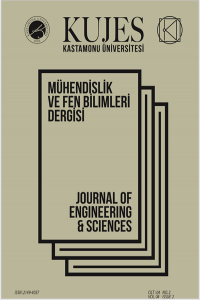Öz
Population growth and rapid
urbanization in Turkey on the one hand, on the other hand are in high demand
created by the specific growth rate. For this reason, there is a necessity of
sufficient production for domestic and foreign markets to balance production.
Meat production cost varies from
region to region, from operation to operation. Use of feeds efficiently (taking
into account the feeding values of the silage and other feeds), careful and
proper transport, and good marketing practices, such as reducing costs in production,
reducing unnecessary investments, raising the efficiency of the infant,
productivity.
Especially under the cattle
should be fertility values in Turkey. The point at which all production is
locked is reproductive efficiency values. Turkey has 5.4 million milking cows
and 3.5 million calves annually. That is, the calf per cow ratio is 64.8%.
We can say that there is at
least a 15% chance of developing calves born to cows in our country.
Considering the 5.4 million cows still earned and the annual number of calves
produced by 80% offspring, 3.4 million of them will rise to 4.3 million.
For the target of our country in cattle breeding
in 2023 and 2071, it should not be only self-production. It should aim to
produce a product that distributes meat and dairy products to all its students,
assists poor countries, exports to the world, targets 2023-2071; For breeding
and meat production, importation is the starting point for export,more fry,
more feed production. Support should be given to the product itself (6-month-old
calves and fodder crops).
Anahtar Kelimeler
Kaynakça
- Akman. N., E. Tuncel., N. Tüzemen., S. Kumlu., M. Özder., Z. Ulutaş. 2010. Türkiye Sığırcılık İşletmelerinin Yapısı ve Geleceğin Sığırcılık İşletmeleri . Ziraat Mühendisliği VII. Teknik Kongresi. 11-15 Ocak 2010. TMMOB Ziraat Mühendisleri Odası, Ankara.
- Özhan, M., Tüzemen, N., Yanar, M . 2011. Büyükbaş Hayvan Yetiştirme. Atatürk Üniversitesi Ziraat Fakültesi Ders Notu, Yayın No :134, Erzurum.
- FAO, 2014 http://www.fao.org/economic/ess/food /
- TUİK, 2017 http://www.tuik.gov.tr/hayvancılık
- Tüzemen, N ., Yanar , M., Aydın, R., 2012. Erzurum İli Büyükbaş Hayvancılığının ( Sığır Yetiştiriciliğinin ) Durumu, Sorunları Ve Çözüm Önerileri. Erzurum Tarım Raporu-2012. Ziraat Mühendisleri Odası.,TMMOB., s:70-93
- Anon.2017. Tarım Bakanlığı, https://www.tarim.gov.tr/
- Tüzemen, N., Yanar, M., Akbulut, Ö., Aydın, R., 1998. Türkiye Sığır Islahı Stratejisi. "Doğu Anadolu Tarım Kongresi", 14-18 Eylül, 1998, Erzurum.
- Tüzemen, N. 2006. Hayvancılık Organizasyonları. Atatürk Üniversitesi Ziraat Fakültesi Ders Notu, Erzurum (Basılmamış).
- Akbulut, Ö., Yanar, M., Tüzemen, N., Bayram, B. 2004. Türkiye’de Et Üretiminin Artırılmasında Kültür Irkı Sığırlardan Yararlanma İmkanları. “IV. Ulusal Zootekni Bilim Kongresi“, SDÜ Ziraat Fakültesi Zootekni Bölümü, 01-04 Eylül, İsparta.
- Akman. N., Tuncel.E., Yener. M., Özkütük. S., Tüzemen. N., Yanar. M., Koç. A., Şahin. O., Kaya.Y.Ç., 2005. Türkiye’de Sığır Yetiştiriciliği. Türkiye Ziraat Mühendisliği VI. Teknik Kongresi, 3-7 Ocak, Ankara.
- Çukur, F., Demirbaş, N., Yıldız, Ö., 2009. Avrupa Birliği Perspektifinden Türkiye’de Süt Sığırcılığı Sektöründeki Gelişmeler. Hr.Ü.Z.F.Dergisi,2009,13(4): 31-39
Öz
Türkiye’de bir taraftan nüfus artışı ve hızlı şehirleşme,
diğer yandan belirli bir kalkınma hızının oluşturduğu yüksek talep
bulunmaktadır. Bu nedenle üretimin dengelenmesi iç ve dış pazarlara yönelik
yeterli bir üretim yapılması mecburiyeti ortaya çıkmaktadır.
Et üretim maliyeti bölgeden bölgeye, işletmeden işletmeye
değişme gösterir. Üretimde masrafların azaltılmasında, gereksiz yatırımların
kısılması, Yavru verim oranının yükseltilmesi, Sağlık kontrolleri, Aşı ve
temizlik kurallarına uyma, Yemleri etkili olarak kullanma (üretimi artırıcı
yollar, silaj ve diğer yemlerin besleme değerlerinin dikkate alınması),
dikkatli ve uygun nakliye ile iyi bir pazarlama işletmenin verimliliğini
artıracaktır.
Türkiye sığırlarında özellikle döl verim değerleri olması
gerekenin altındadır. Bütün üretimin kilitlendiği nokta döl verim değerleridir.
Türkiye’de 5.4 milyon sağılan inek ve 3.5 milyon yıllık doğan buzağı
bulunmaktadır. Yani sağılan inek başına buzağı oranı % 64.8 seviyesindedir.
Ülkemizde sağılan inek başına doğan buzağı oranında en az
%15 ‘lik bir gelişme imkanı olduğunu söyleyebiliriz. Halen 5.4 milyon sağılan inek dikkate
alındığında ve % 80 yavru elde edilmesi ile üretilen yıllık buzağı sayısının
3.4 milyon buzağının 4.3 milyon başa yükselmesi söz konusudur.
Sığır yetiştiriciliğinde ülkemizin hedefi 2023
ve 2071 için, sadece kendine yetecek üretim olmamalıdır. Et ve süt ürünlerini
bütün öğrencilerine dağıtan, yoksul ülkelere yardım eden, dünyaya ihracat yapan
bir üretim hedeflemek olmalıdır, 2023-2071 hedeflerinde; besi ve et üretimi için ithalattan ihracata
geçebilmenin başlangıç noktası, daha fazla yavru, daha fazla yem üretimidir.
Üretimin artırılmasında desteklemeler ürünün kendisine (6 aylık buzağıya ve yem
bitkilerine) yapılmalıdır
Anahtar Kelimeler
Kaynakça
- Akman. N., E. Tuncel., N. Tüzemen., S. Kumlu., M. Özder., Z. Ulutaş. 2010. Türkiye Sığırcılık İşletmelerinin Yapısı ve Geleceğin Sığırcılık İşletmeleri . Ziraat Mühendisliği VII. Teknik Kongresi. 11-15 Ocak 2010. TMMOB Ziraat Mühendisleri Odası, Ankara.
- Özhan, M., Tüzemen, N., Yanar, M . 2011. Büyükbaş Hayvan Yetiştirme. Atatürk Üniversitesi Ziraat Fakültesi Ders Notu, Yayın No :134, Erzurum.
- FAO, 2014 http://www.fao.org/economic/ess/food /
- TUİK, 2017 http://www.tuik.gov.tr/hayvancılık
- Tüzemen, N ., Yanar , M., Aydın, R., 2012. Erzurum İli Büyükbaş Hayvancılığının ( Sığır Yetiştiriciliğinin ) Durumu, Sorunları Ve Çözüm Önerileri. Erzurum Tarım Raporu-2012. Ziraat Mühendisleri Odası.,TMMOB., s:70-93
- Anon.2017. Tarım Bakanlığı, https://www.tarim.gov.tr/
- Tüzemen, N., Yanar, M., Akbulut, Ö., Aydın, R., 1998. Türkiye Sığır Islahı Stratejisi. "Doğu Anadolu Tarım Kongresi", 14-18 Eylül, 1998, Erzurum.
- Tüzemen, N. 2006. Hayvancılık Organizasyonları. Atatürk Üniversitesi Ziraat Fakültesi Ders Notu, Erzurum (Basılmamış).
- Akbulut, Ö., Yanar, M., Tüzemen, N., Bayram, B. 2004. Türkiye’de Et Üretiminin Artırılmasında Kültür Irkı Sığırlardan Yararlanma İmkanları. “IV. Ulusal Zootekni Bilim Kongresi“, SDÜ Ziraat Fakültesi Zootekni Bölümü, 01-04 Eylül, İsparta.
- Akman. N., Tuncel.E., Yener. M., Özkütük. S., Tüzemen. N., Yanar. M., Koç. A., Şahin. O., Kaya.Y.Ç., 2005. Türkiye’de Sığır Yetiştiriciliği. Türkiye Ziraat Mühendisliği VI. Teknik Kongresi, 3-7 Ocak, Ankara.
- Çukur, F., Demirbaş, N., Yıldız, Ö., 2009. Avrupa Birliği Perspektifinden Türkiye’de Süt Sığırcılığı Sektöründeki Gelişmeler. Hr.Ü.Z.F.Dergisi,2009,13(4): 31-39
Ayrıntılar
| Birincil Dil | Türkçe |
|---|---|
| Konular | Mühendislik |
| Bölüm | Araştırma Makaleleri |
| Yazarlar | |
| Yayımlanma Tarihi | 28 Aralık 2018 |
| Gönderilme Tarihi | 30 Nisan 2018 |
| Yayımlandığı Sayı | Yıl 2018 Cilt: 4 Sayı: 2 |
Kaynak Göster


